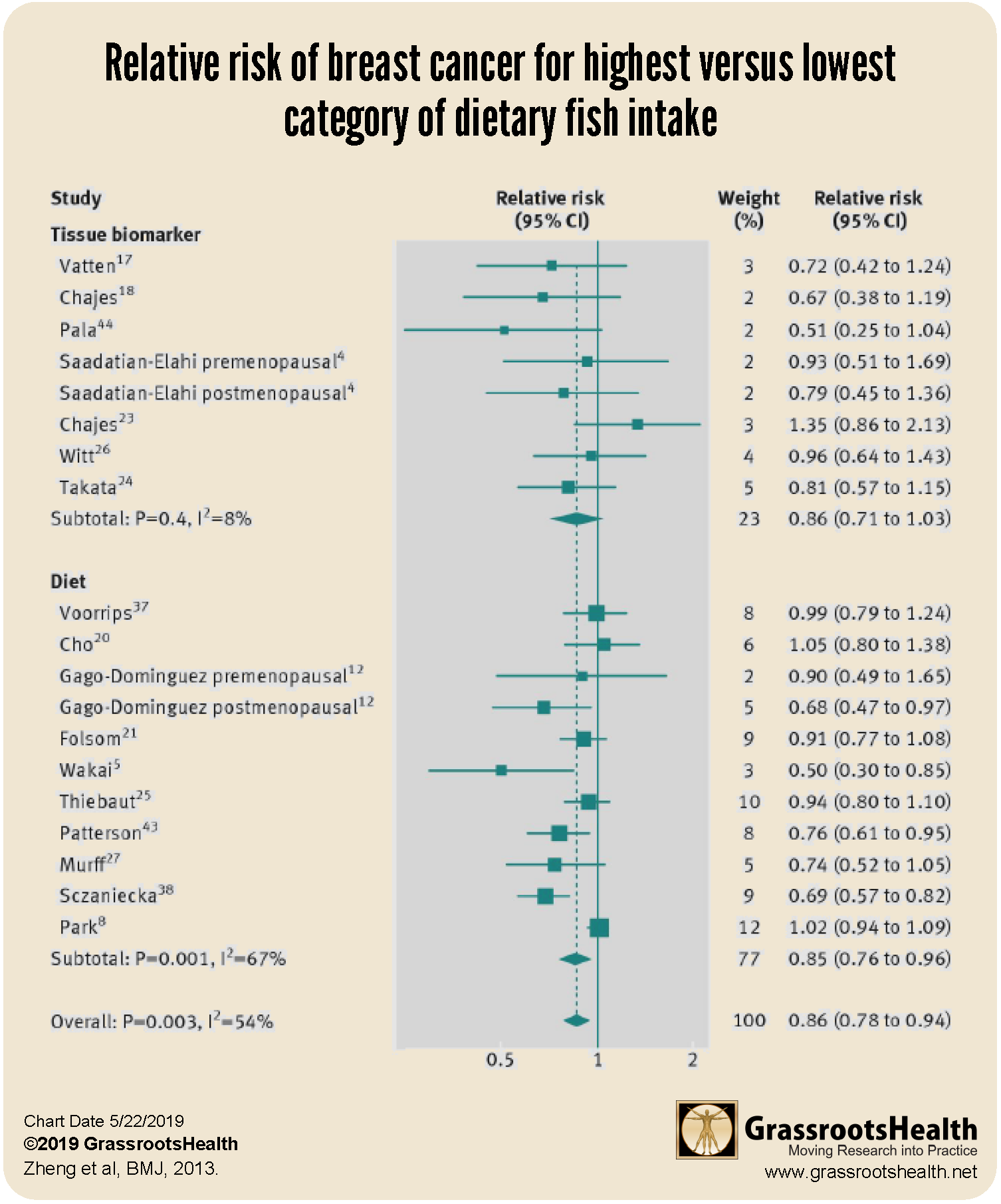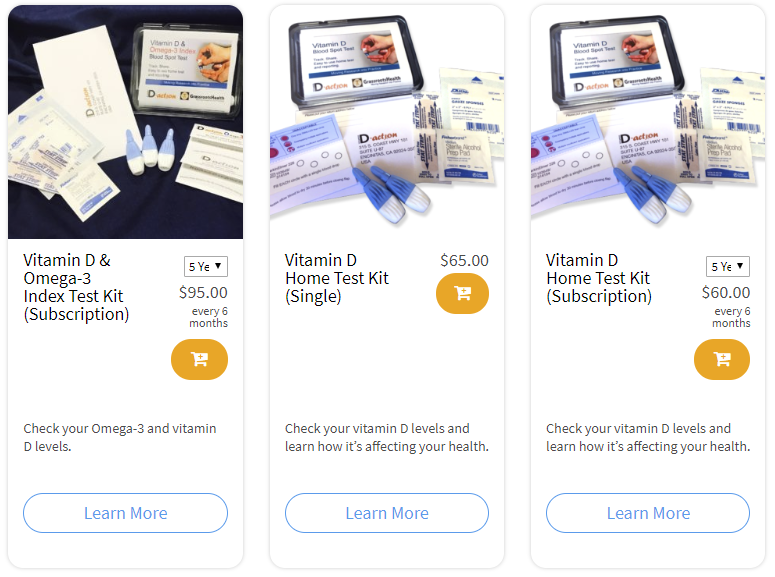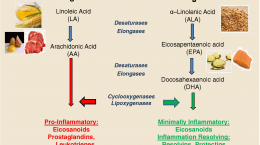Published on October 28, 2019
 October is Breast Cancer Awareness Month, but here at GrassrootsHealth Nutrient Research Institute we prefer to take the opportunity each October to focus on breast cancer prevention. To help educate the public on the effects of certain nutrients and breast cancer prevention, we have created a series of posts focused on key research, with highlights from several published studies showing the effects of vitamin D on breast cancer risk. Today we are taking a look at omega-3s and how they may play a role in reducing breast cancer risk.
October is Breast Cancer Awareness Month, but here at GrassrootsHealth Nutrient Research Institute we prefer to take the opportunity each October to focus on breast cancer prevention. To help educate the public on the effects of certain nutrients and breast cancer prevention, we have created a series of posts focused on key research, with highlights from several published studies showing the effects of vitamin D on breast cancer risk. Today we are taking a look at omega-3s and how they may play a role in reducing breast cancer risk.
Please share this informational series with all you know who may have or be concerned with getting breast cancer.
What does the research show on omega-3s and breast cancer risk?
A meta-analysis of 21 studies on omega-3s and risk of breast cancer by Zheng et al. concludes that higher consumption of omega-3s corresponds with a lower risk of breast cancer.
The chart below is a forest plot showing the relative risk of breast cancer when comparing the highest category of omega-3, from either blood measurements or diet reports, to the lowest category of omega-3.
How do you read this chart?
The purpose of a forest plot is to help you see the forest among the trees. They are used often in a meta-analysis, such as this paper, to summarize the results from individual studies. The idea is to compare two categories for one outcome, in this case, highest vs. lowest omega 3 for risk of breast cancer. The vertical line, labeled as 1, indicates that the risk of getting breast cancer is the same for both categories. A relative risk less than 1.0 indicates lower risk with higher omega-3 and a relative risk above 1.0 indicates higher risk with higher omega-3. In this plot, most points are to the left, showing a lower risk of breast cancer with higher levels or consumption of omega-3s. Each point also has an associated bar with it – this represents the 95% confidence interval used in statistics. In reality it means the point could be anywhere along that line. Finally the big diamond at the bottom is the aggregate risk for all of the studies. In this paper they did an aggregate for just blood levels, for consumption, and for both.
Overall, those with the highest intake or blood levels of omega 3 had a 14% lower risk for breast cancer compared to those with the lowest. Please note that with vitamin D, by getting the serum level to at least 60 ng/ml (150 nmol/L), breast cancer risk was reduced by 80%. Be sure to know both levels!
Join the Study to Help Reduce Breast Cancer Incidence
Reduce Breast Cancer NOW! is a field trial of GrassrootsHealth using our methodology for moving nutrient research into practice. This model was developed and tested over 7 years, with over 10,000 participants, through the D*action project. All women can join this project to help demonstrate the effects of vitamin D on breast cancer prevention.
Donate to this project today!
Are you concerned that your omega-3 and vitamin D levels may not be at a level for potential cancer risk reduction?
Make sure you know your Omega-3 Index (with a target of 8% or higher) and your vitamin D level (with a target of 40-60 ng/ml or 100-150 nmol/L). Through GrassrootsHealth Nutrient Research Institute, you can also test your inflammation levels and levels of essential nutrients and toxins. Find out your levels today! Log on to the shop (click the link below) to get your tests and see for yourself if your level can be improved.
Make sure you track your results before and after, about every 6 months!
Click Here to Access the Shop Page
How can I track my nutrient intake and levels over time?
To help you track your supplement use and nutrient levels, GrassrootsHealth has created an online tracking system called myData-myAnswers. For each specific supplement, you can track what days you take it, how much, and many other details. This will help you know your true supplemental intake and what patterns of use work for you to reach and maintain optimum nutrient levels. Check it out today!








